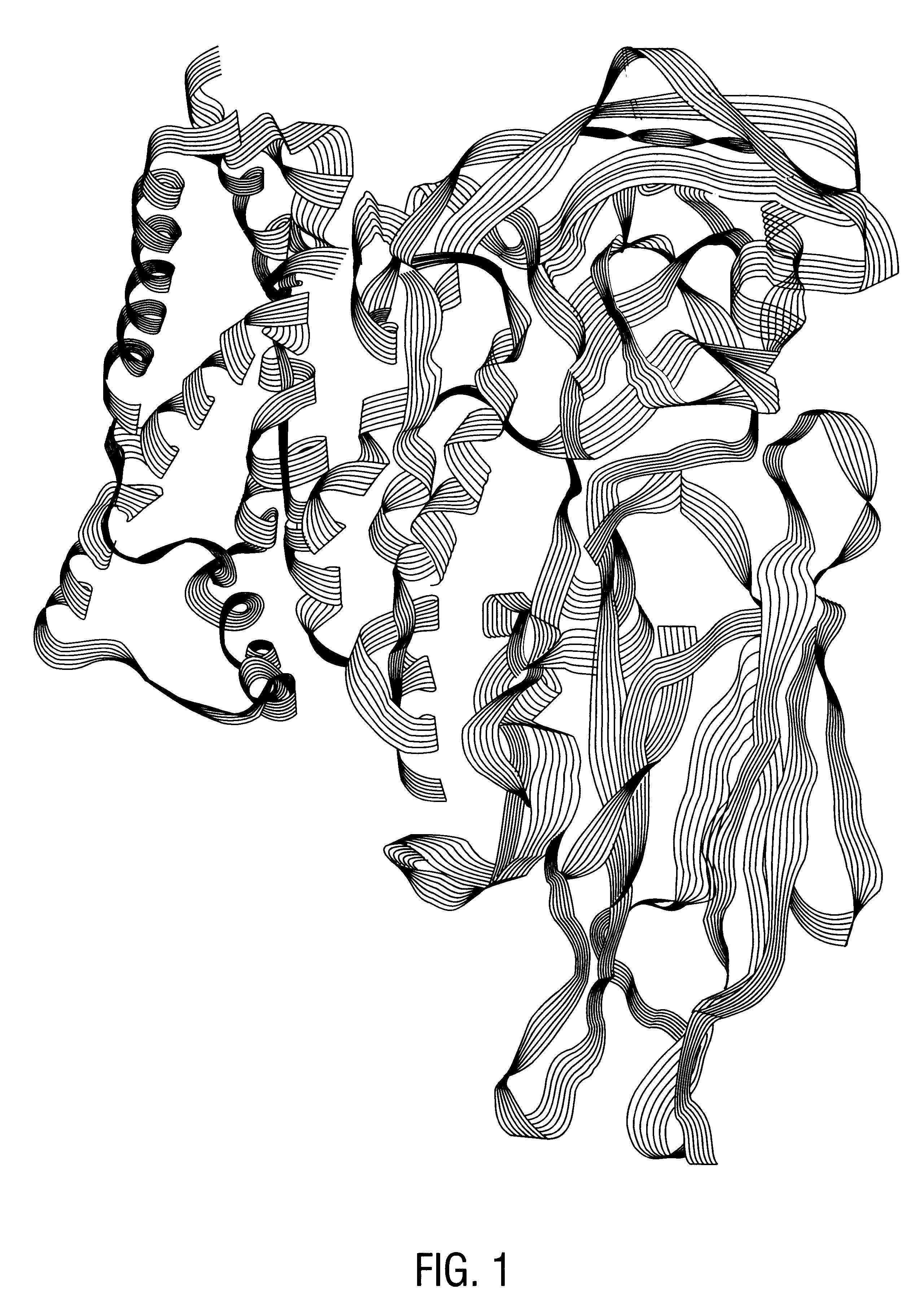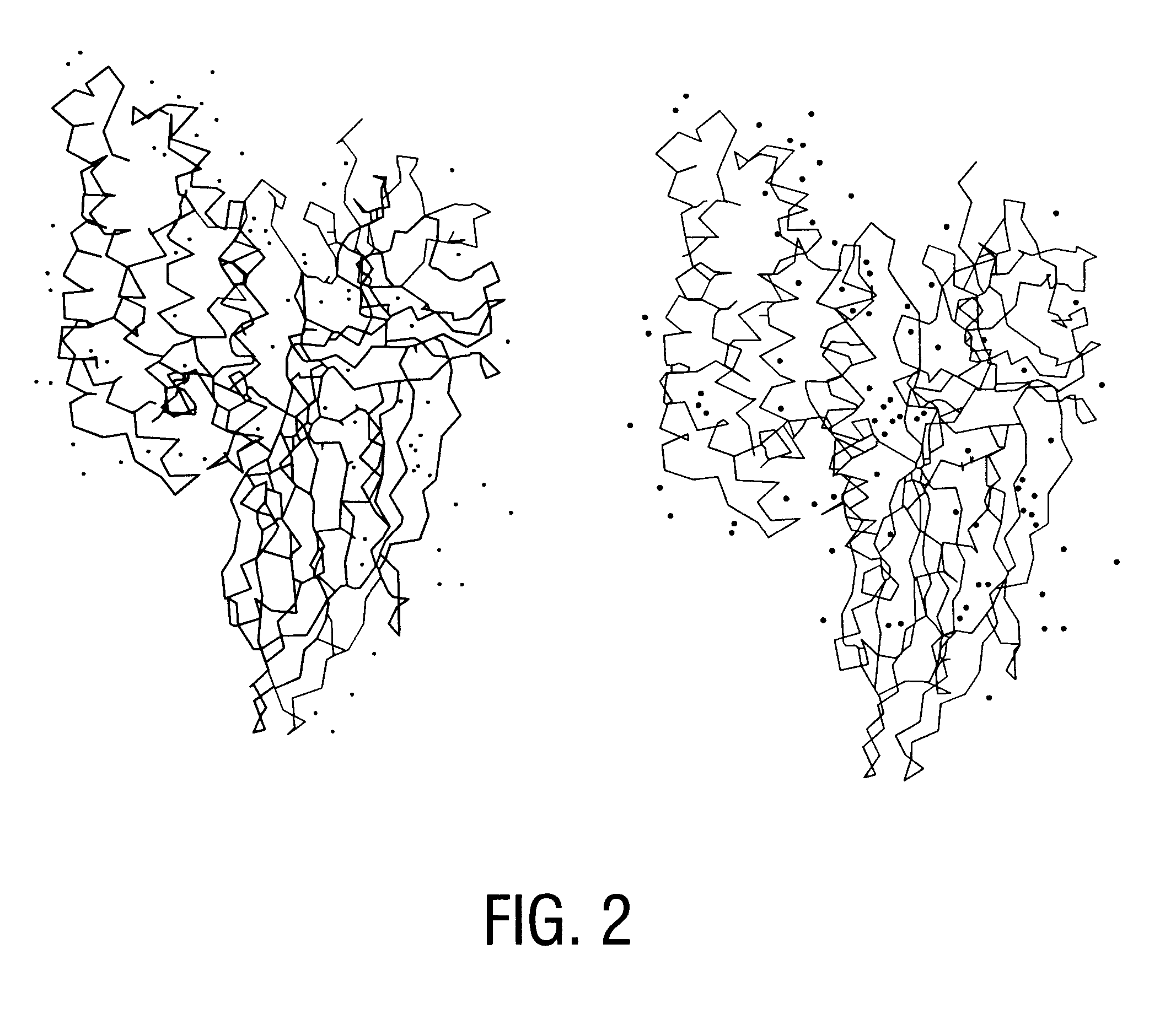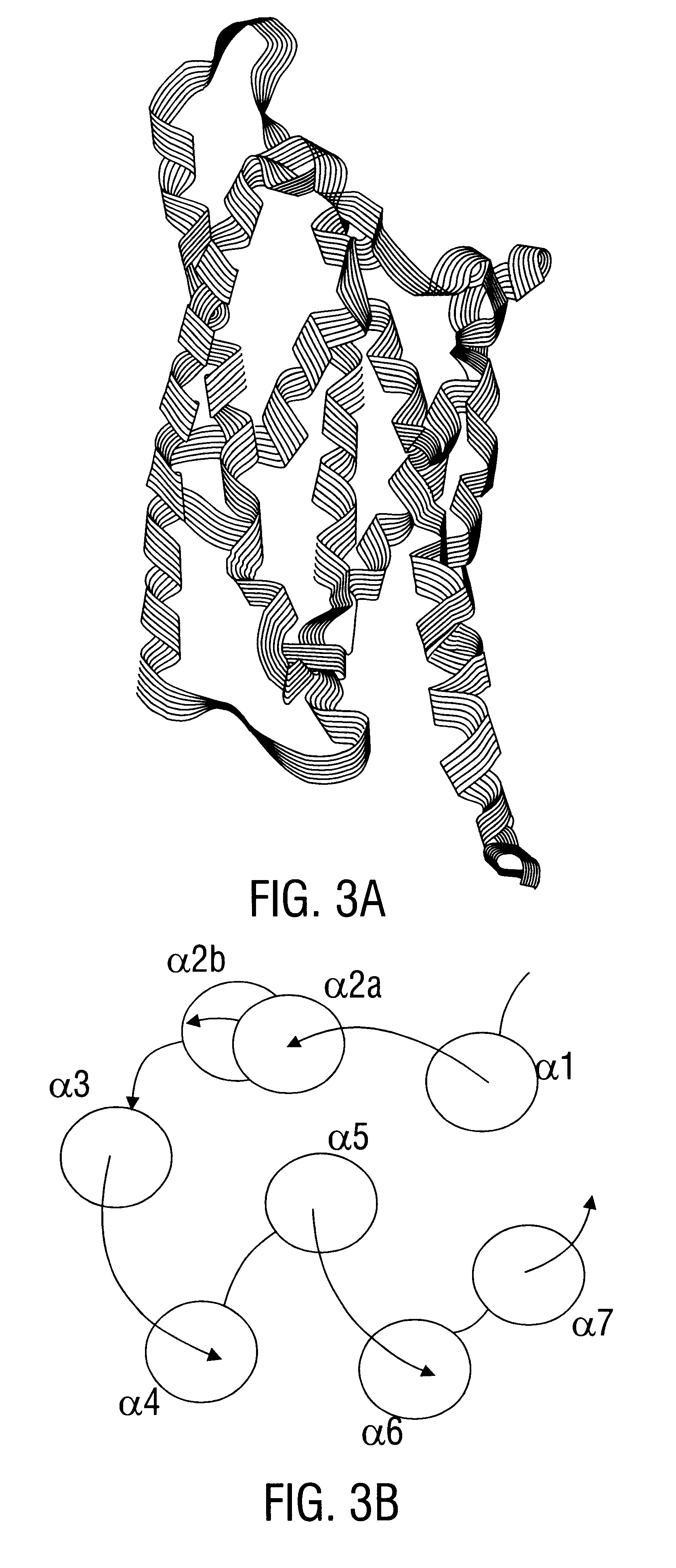Coleopteran-resistant transgenic plants and methods of their production using modified Bacillus thuringiensis Cry3Bb nucleic acids
a technology of bacillus thuringiensis and cry3bb, which is applied in the direction of bacteria peptides, peptide sources, peptide sources, etc., can solve the problems of coleopteran and lepidoptem pests, turf grasses are often attacked by pests, and all field crops, plants and commercial farming areas are susceptible to attack, etc., to achieve enhanced expression of siderophores, effective and stable occupying niches in the environmen
- Summary
- Abstract
- Description
- Claims
- Application Information
AI Technical Summary
Problems solved by technology
Method used
Image
Examples
example 1
5.1 Example 1
Three-dimensional Structure of Cry3Bb
The three-dimensional structure of Cry3Bb was determined by X-ray crystallography. Crystallization of Cry3Bb and X-ray diffraction data collection were performed as described by Cody et al. (1992). The crystal structure of Cry3Bb was refined to a residual R factor of 18.0% using data collected to 2.4 .ANG. resolution. The crystals belong to the space group C222.sub.1 with unit cell dimensions a=122.44, b=131.81, and c=105.37 .ANG. and contain one molecule in the asymmetric unit. Atomic coordinates for Cry3Bb are described in Example 31 and listed in Section 9.
The structure of Cry3Bb is similar to that of Cry3A (Li et al., 1991). It consists of 5825 protein atoms from 588 residues (amino acids 64-652) forming three discrete domains (FIG. 1). A total of 251 water molecules have been identified in the Cry3Bb structure (FIG. 2). Domain 1 (residues 64-294) is a seven helical bundle formed by six helices twisted around the central helix, ....
example 2
5.2 Example 2
Preparation of Cry3Bb.60
B. thuringiensis EG7231 was grown through sporulation in C2 medium with chloramphenicol (Cm1) selection. The solids from this culture were recovered by centrifugation and washed with water. The toxin was purified by recrystallization from 4.0 M NaBr (Cody et al., 1992). The purified Cry3Bb was solubilized in 10 ml of 50 mM KOH / 100 mg Cry3Bb and buffered to pH 9.0 with 100 mM CAPS (pH 9.0). The soluble toxin was treated with trypsin at a weight ratio of 50 mg toxin to 1 mg trypsin. After 20 min of trypsin digestion the predominant protein visualized by SDS-polyacrylamide gel electrophoresis (SDS-PAGE) was 60 kDa. Further digestion of the 60-kDa toxin was not observed. FIG. 4 illustrates the Coomassie-stained Cry3Bb and Cry3Bb.60 following SDS-PAGE.
example 3
5.3 Example 3
Purification and Sequencing of Cry3Bb.60
Cry3Bb.60 was electrophoretically purified by SDS-PAGE and electroblotted to Immobilon-P.RTM. (Millipore) membrane by semi-dry transfer at 15V for 30 min. The membrane was then washed twice with water and stained with 0.025% R-250, 40% methanol. To reduce the background, the blot was destained with 50% methanol until the stained protein bands were visible. The blot was then air dried, and the stained Cry3Bb.60 band was cut out of the membrane. This band was sent to the Tufts University Sequencing Laboratory (Boston, Mass.) for N-terminal sequencing. The experimentally-determined N-terminal amino acid sequence is shown in Table 7 beside the known amino acid sequence starting at amino acid residue 160.
PUM
| Property | Measurement | Unit |
|---|---|---|
| spatial distance | aaaaa | aaaaa |
| temperatures | aaaaa | aaaaa |
| temperatures | aaaaa | aaaaa |
Abstract
Description
Claims
Application Information
 Login to View More
Login to View More - R&D
- Intellectual Property
- Life Sciences
- Materials
- Tech Scout
- Unparalleled Data Quality
- Higher Quality Content
- 60% Fewer Hallucinations
Browse by: Latest US Patents, China's latest patents, Technical Efficacy Thesaurus, Application Domain, Technology Topic, Popular Technical Reports.
© 2025 PatSnap. All rights reserved.Legal|Privacy policy|Modern Slavery Act Transparency Statement|Sitemap|About US| Contact US: help@patsnap.com



